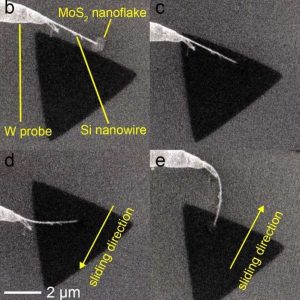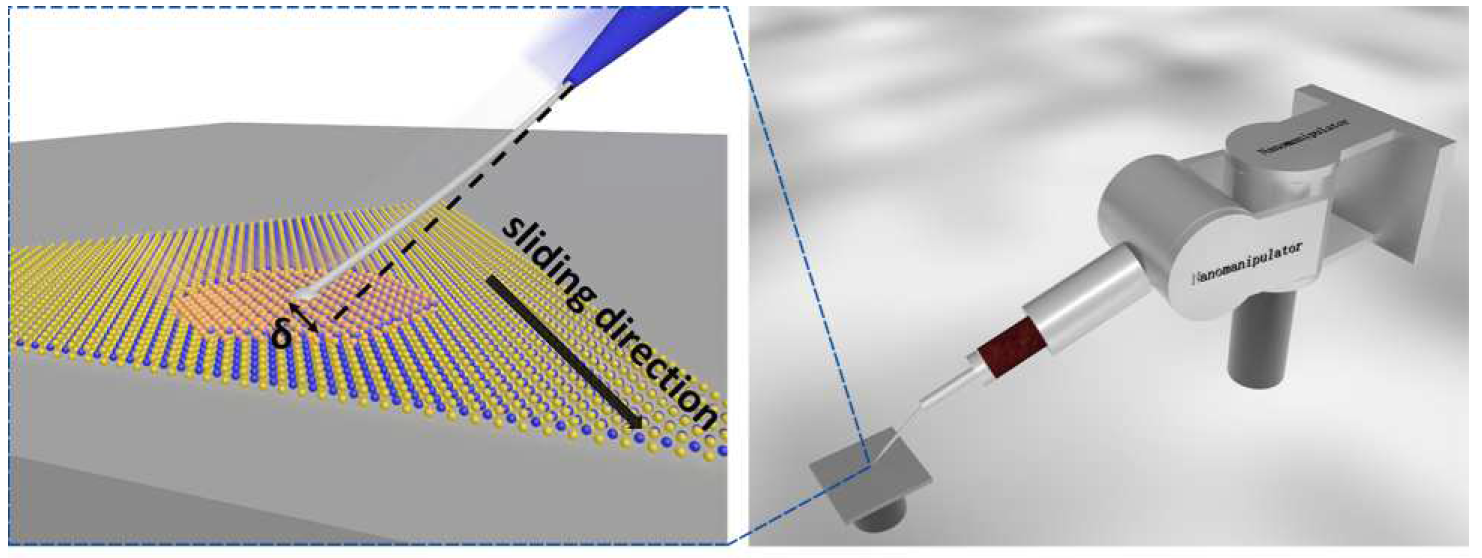
Hexagonal molybdenum disulfide (MoS2) is a well-known lamellar compound that has been used for a long time as a solid lubricant and additive to the lubricating oil. Its excellent lubricating performance is attributed to the weak interaction between MoS2 atomic layers, which results into their easy sliding on top of each other. However, their frictional properties have not been experimentally investigated due to the lack of appropriate techniques. Nevertheless, these features have been intensively studied in theory and the superlubricity between MoS2 layers was predicted.
In a recent paper published in Advanced Materials, Xianlong Wei and colleagues in Peking University, China, report a versatile method for studying the frictional properties between atomic layers of MoS2. For this purpose, they combine the competence of an in situ scanning electron microscope with a force sensor which is fabricated from a Si nanowire. The friction tests are conducted on the monolayers of MoS2.The friction force is measured by sliding a Si nanowire on the surface of MoS2 monolayer. The electron microscope helps in monitoring and adjusting the sliding angle between the Si nanowire and MoS2 flake.
An ultralow friction coefficient of around 10–4 is reported which is an indicator of superlubricity. The results show that superlubricity between incommensurate atomic-layered materials can preserve even when their thickness is scaled down to monolayer. The results provide the first direct experimental evidence for superlubricity between atomic layers of hexagonal MoS2. The technique will open a new route to investigate frictional properties of other 2D materials including graphene, as well.

















